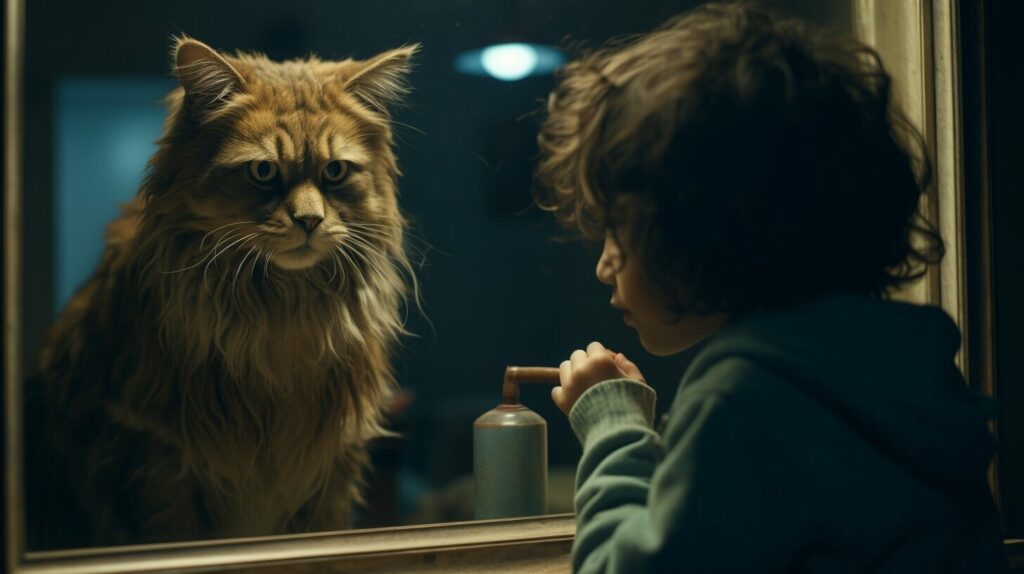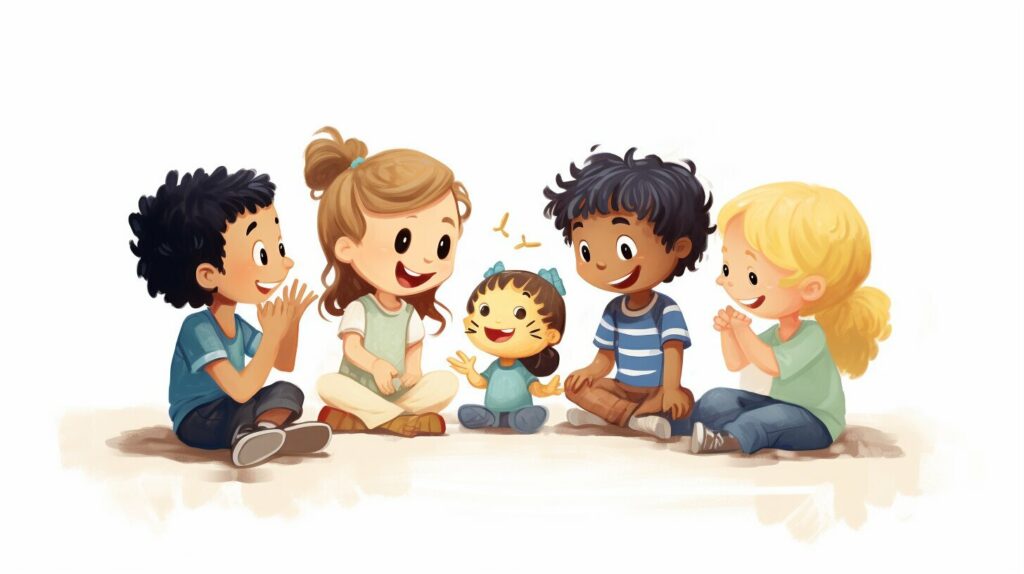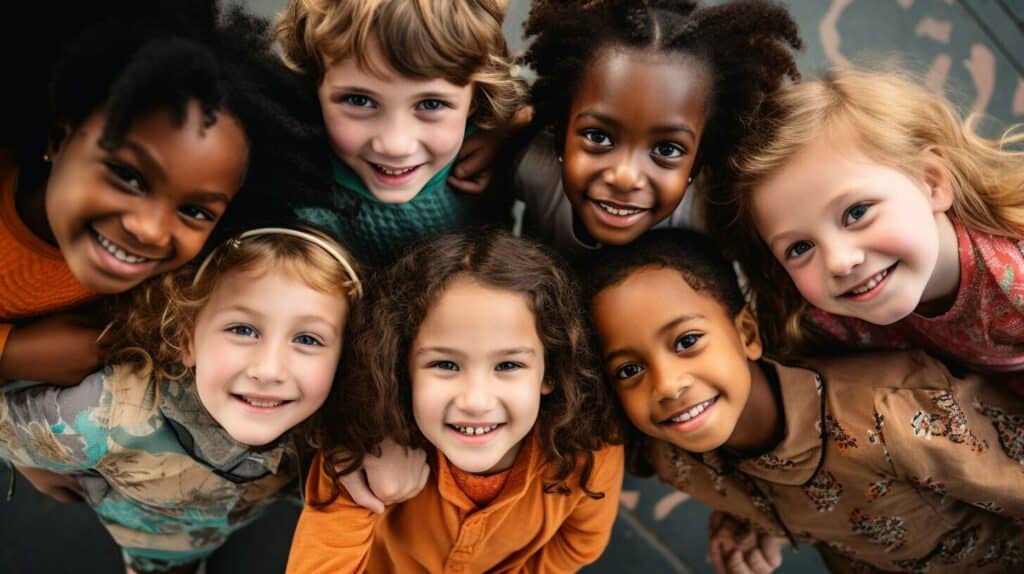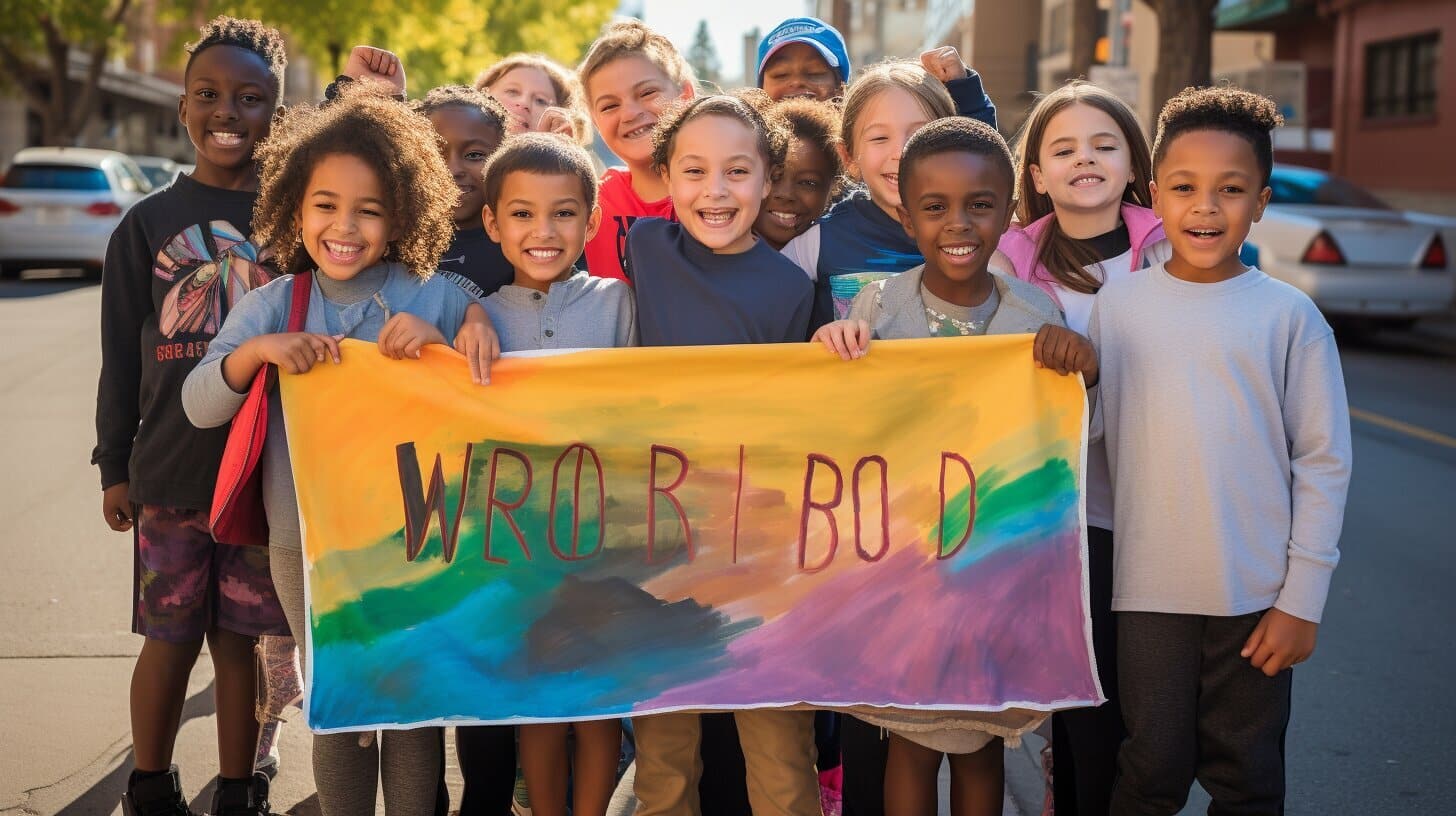Explaining complex concepts to children can be a challenge, especially when it comes to abstract ideas like “haughty.” However, it’s important for kids to understand the impact of haughty behavior and how to respond appropriately. In this section, we’ll provide you with a step-by-step guide on how to explain haughty to a child in a simple and friendly way.
Key Takeaways:
- Haughty behavior is when someone acts superior or snobby, looking down on others and treating them as if they are less important.
- Breaking down the concept of haughty into simpler terms that children can relate to can help them understand it better.
- Teaching children the importance of empathy, effective communication, and assertiveness can also help them deal with haughty behavior.
Understanding Haughty Behavior
Before you explain haughty behavior to your child, you need to understand what it means. Haughty behavior is when someone acts superior or snobby, looking down on others and treating them as if they are less important. This can be hurtful and make others feel unimportant and excluded.
When explaining haughty behavior to your child, use child-friendly language to help them understand. You could say, “Haughty means acting like you are better than others and not treating them with kindness and respect.”
It’s important to emphasize that everyone is equal and deserves to be treated kindly and respectfully. You can use examples to help your child understand, such as a fictional character who acts haughty towards others, or a real-life situation where someone made them feel small or unimportant.
Understanding Haughty Behavior – Table
| Haughty Behavior | Kind and Respectful Behavior |
|---|---|
| Acting superior to others | Treating others equally |
| Looking down on others | Encouraging and supporting others |
| Excluding others | Including and accepting others |
By understanding haughty behavior, you can help your child recognize it when they encounter it. This will give them the tools they need to respond appropriately and stand up for themselves and others.

Breaking Down Haughty for Kids
Now that your child understands what haughty behavior is, it’s time to break down the concept into simpler terms they can relate to. By using relatable examples, your child can better understand the impact of haughty behavior on others and why it’s important to avoid it.
Imagine a child who refuses to play with others because they think they’re better, or someone who talks down to others and makes them feel small. These are examples of haughty behavior that your child may encounter. Use these examples to help them understand why haughty behavior can be hurtful and how it may make others feel.
Encourage your child to think about how they would feel if someone treated them haughtily. This can help them develop empathy and motivate them to treat others with kindness and respect. Remember to use child-friendly language and keep the conversation age-appropriate to help your child fully understand the concept of haughty behavior.
 It’s important to help your child understand the impact of haughty behavior on others and why it’s important to avoid it.
It’s important to help your child understand the impact of haughty behavior on others and why it’s important to avoid it.Empathy and Understanding
Teaching your child about empathy and understanding is essential in helping them understand haughty behavior. It’s important to explain to your child that everyone is equal and that treating others with respect and kindness is crucial, regardless of their background or abilities.
Encourage your child to put themselves in someone else’s shoes and consider how they would feel if someone treated them haughtily. By doing this, they will start to understand how their actions and words affect others.
One way to foster empathy is by volunteering in the community or participating in charity events. This allows your child to see the world from a different perspective and understand the needs of others.
Remember: empathy is all about putting yourself in someone else’s shoes and understanding their feelings and experiences.

Use the image above to help your child understand the concept of empathy and why it’s important to understand how others feel.
Communication and Assertiveness
Teaching your child effective communication and assertiveness skills can help them confidently deal with haughty behavior. Encourage them to use “I” statements, express their feelings, and set boundaries when necessary. Reinforce that it’s okay to say no and stand up for themselves.
Role-playing scenarios can also help your child practice appropriate responses to haughty behavior. Create fictional situations where they can assert themselves confidently and find peaceful resolutions. Encourage them to think about alternative ways to respond when faced with haughtiness.
 Image source: https://seowriting.ai/32_6.png
Image source: https://seowriting.ai/32_6.pngRole-Playing and Scenarios
Engaging your child in role-playing activities and scenarios can help them practice appropriate responses to haughty behavior. This is a fun and interactive way to teach your child how to handle situations where someone is acting superior or snobby.
Here’s an example scenario you can use:
| Role | Objectives |
|---|---|
| Your Child | Become familiar with assertiveness techniques and practice expressing their feelings and setting boundaries. |
| Haughty Character | Learn the impact of their behavior on others and practice empathy. |
In this scenario, have your child role-play being in a situation where someone is acting haughty towards them. Encourage them to assert their feelings by using “I” statements, such as “I feel upset when you talk down to me”. Then, ask the haughty character to respond and have your child consider alternative ways to respond peacefully.
Remember that role-playing is a way to learn and practice new skills, so try to make it fun and lighthearted. Use positive reinforcement to encourage your child’s progress, and remind them that it’s okay to make mistakes because that’s how we learn and improve.

Recognizing Haughty Behavior in Media
Watching TV shows and movies can be a fun way to learn about different characters and their unique traits. However, it’s also important to be able to recognize when a character is exhibiting haughty behavior. This will help your child develop critical thinking skills and understand the impact of such behavior on others.
You can guide your child to identify haughty behavior in media by asking questions such as:
- How do you think the character’s behavior makes others feel?
- Do you agree with the character’s actions towards others?
- How would you feel if someone treated you in the same way?
Encourage your child to think about how they would react to haughty behavior if they were in the same situation as the character. This can help them develop empathy and understanding towards others, and learn to deal with haughty behavior in a positive way.
Remember, media can also portray positive examples of empathy and inclusiveness. Reinforce these behaviors with your child and point them out when you see them in movies and TV shows. By doing so, you can help your child develop a strong sense of social awareness and appreciation for others.

Encouraging Empathy and Inclusion
At a young age, it’s important to teach children the value of empathy and inclusiveness. This means encouraging them to reach out to others who may be feeling left out or lonely. It also means helping them understand that every person is unique, and that we should embrace our differences rather than judge each other.
One way to teach empathy and inclusion is to expose children to a variety of cultures and backgrounds. This can be done through books, movies, and TV shows that showcase diverse characters and perspectives. You can also encourage your child to interact with people from different backgrounds, whether it’s through school, sports, or community events.
Another way to promote empathy and inclusiveness is to model it yourself. Children often learn by example, so make sure you’re treating others with kindness and respect, regardless of their background or abilities. Show them that empathy and inclusiveness are important values to uphold in all areas of life.
Remember: the more children understand the value of empathy and inclusiveness, the less likely they are to exhibit haughty behavior themselves. This ultimately leads to a more peaceful and harmonious community.

Leading by Example
Children learn by example, and as their role model, you can teach them the importance of being kind and respectful towards others. Be mindful of your own behavior and language, and make a conscious effort to treat others with empathy and inclusiveness. Encourage your child to join you in acts of kindness, such as volunteering or helping a neighbor, and talk to them about the impact their actions can have on the world around them.
Set clear expectations for behavior and model it consistently. Children learn to mimic the behavior of those they look up to, so make sure you are leading by example. If they see you treating others with respect, they are more likely to do the same.

Remind your child that everyone deserves to be treated with kindness and respect, regardless of their background or abilities. It is essential to teach children the value of empathy and inclusiveness in today’s diverse world. Encourage them to build connections and make friends with people from different backgrounds to gain a better understanding of the world around them.
Reinforcing Positive Behavior
When your child demonstrates empathy, inclusiveness, and respect towards others, it’s important to acknowledge and reinforce their positive behavior. Praise them for their efforts in understanding and dealing with haughty behavior in a positive way. This will help them build essential communication skills and reinforce the importance of treating others with kindness.
You can also find opportunities to model positive behavior yourself. For example, you might say, “I really appreciate how kind you are to your little brother. That’s exactly the kind of behavior we want to encourage in our family.
 You can use positive reinforcement to reinforce good behavior in your child.
You can use positive reinforcement to reinforce good behavior in your child.
Seeking Support from Adults
As a parent, teacher, or caregiver, it’s important to provide a safe and supportive environment for children to discuss their feelings and concerns about haughty behavior. Encourage your child to speak up if they experience or witness haughty behavior, and assure them that they can always seek support from trusted adults.
You can help by listening to their concerns, validating their feelings, and offering advice on how to handle difficult situations. If necessary, you can also reach out to other adults, such as teachers or counselors, for additional support.
Remember, it’s crucial to take haughty behavior seriously and address it promptly. By working together with your child and other adults, you can help create a culture of empathy, inclusiveness, and respect that encourages positive interactions and discourages harmful behavior.

Conclusion
Explaining haughty behavior to a child can be a challenging task, but with our simple and friendly guide, you can help them understand and deal with it in a positive manner. By breaking down the concept of haughty into simpler terms, encouraging empathy and inclusion, and reinforcing positive behavior, you can equip your child with essential communication skills that will benefit them in all areas of their life.
Remember to lead by example and seek support from trusted adults if your child encounters haughty behavior that they are unsure how to handle. By working together, we can help our children understand the importance of treating others with kindness, respect, and inclusiveness.
Can I Use the Same Approach to Explain Ego and Haughty to My Child?
When it comes to explaining complex concepts like ego and haughty to a child, a simple guide to explaining ego can be really helpful. By breaking down these ideas into relatable terms and emphasizing the importance of empathy and humility, children can grasp the understanding of these traits in a more digestible way. It’s crucial to foster their emotional intelligence and teach them to value kindness over arrogance.
FAQ
Q: What does haughty mean?
A: Haughty is when someone acts superior or snobby, looking down on others and treating them as if they are less important.
Q: How can I explain haughty behavior to my child?
A: Start by using child-friendly language to help them understand that haughty behavior is when someone acts superior or snobby, looking down on others and treating them as if they are less important.
Q: Can you give me examples of haughty behavior that my child can relate to?
A: Sure! Examples of haughty behavior can include a child who refuses to play with others because they think they are better or someone who talks down to others and makes them feel small.
Q: How can I teach my child empathy and understanding towards others?
A: It’s important to explain to your child that everyone is equal and that we should treat others with kindness and respect, regardless of their background or abilities. Encourage them to consider how they would feel if someone treated them haughtily.
Q: What can I do to help my child deal with haughty behavior?
A: Teach your child the importance of effective communication and assertiveness. Encourage them to express their feelings and assert their boundaries when faced with someone who acts haughty. Teach them to use “I” statements and ask for explanations if they don’t understand why someone is acting that way.
Q: How can I help my child practice responding to haughty behavior?
A: Engage your child in role-playing activities and scenarios where they can practice appropriate responses to haughty behavior. Encourage them to find peaceful resolutions and think about alternative ways to respond.
Q: How can I help my child recognize haughty behavior in media?
A: Guide your child in recognizing haughty behavior in books, movies, or TV shows. Discuss characters who exhibit haughty traits and their impact on others. Encourage critical thinking by asking questions like, “How do you think the character’s behavior makes others feel?”
Q: How can I encourage empathy and inclusion in my child?
A: Emphasize the importance of inclusiveness and empathy by encouraging your child to reach out to others and make them feel included. Foster an environment where they learn to appreciate others’ unique qualities and understand the harm that haughty behavior can cause.
Q: How can I teach my child to lead by example?
A: Teach your child about the power of leading by example. Explain that their own behavior can influence others and that they have the ability to set a positive example for their friends and peers. Encourage them to be kind, respectful, and inclusive in their interactions with others.
Q: How can I reinforce positive behavior in my child?
A: Acknowledge and reinforce positive behavior when your child demonstrates empathy, inclusiveness, and respect towards others. Praise them for their efforts in understanding and dealing with haughty behavior in a positive way. This will help them build essential communication skills and reinforce the importance of treating others with kindness.
Q: What should my child do if they need support in dealing with haughty behavior?
A: Let your child know that they can always seek support from trusted adults if they encounter haughty behavior they are unsure how to handle. Encourage open communication and assure them that you are there to listen, guide, and support them through any challenges they may face.






